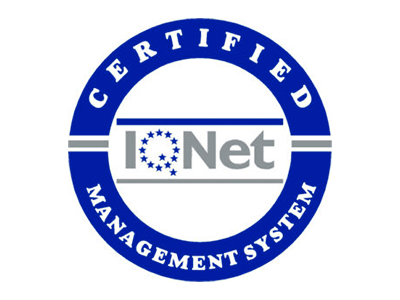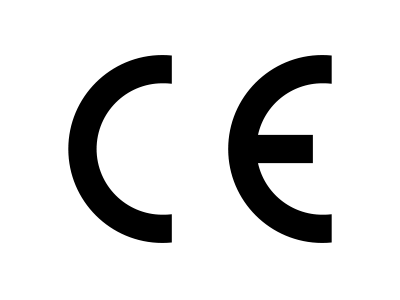7 Unique Types of Medical Writing: Which Niche Fits You Best?
August 1st 2023

Are you ready to take your writing to the next level? In the dynamic world of healthcare communication, there’s more to medical writing than meets the eye.
Welcome to a realm of possibilities – where niche specializations in medical writing await your discovery. In this blog post, we’ll reveal five compelling types of medical writing that offer exciting avenues for your talent. From scientific journalism to health economics and outcomes research (HEOR) writing, each niche presents new possibilities for your writing expertise.
Whether you’re an experienced medical writer or just stepping into the field, we’ve compiled a list of paths to inspire you to discover new paths and elevate your writing expertise to new heights.
7 Different Types of Medical Writing
As medical writers, you have a myriad of opportunities to specialize in niche areas, each offering unique paths to make a significant impact in areas aligned with your interests, expertise, and career goals.
Taking note of these niche specializations can help professional medical writers discover new avenues to expand their skills and knowledge.
1. Regulatory Writing
Think about the pivotal moments in medical breakthroughs. Ever considered who connects the dots? Welcome to the world of regulatory medical writers – the unsung heroes in medical advances.
Their roles are crucial:
- They draft clinical trial protocols, translating research into understandable plans.
- They prepare informative investigator brochures, helping experts grasp study intricacies.
- They create comprehensive regulatory submission dossiers, aiding authorities in crucial decision-making.
These are more than just documents. They unlock the door to new therapies and treatments, ensuring their safety and efficacy for patients.
Imagine a groundbreaking therapy for a rare disease. Regulatory medical writers need to weave complex data and trial results into a compelling narrative. It’s a meticulously crafted document designed to convince regulatory authorities about the therapy’s safety and efficacy.
Upon approval, this therapy turns into a beacon of hope for patients. That’s the transformative power of regulatory medical writing, an art that blends precision with passion, shaping the future of healthcare one word at a time.
2. Patient Education Materials
Explore the realm of patient education in medical writing. The objective? To equip patients with essential knowledge, enhance health literacy, and boost treatment compliance.
This is achieved through:
- Crafting captivating brochures.
- Constructing user-friendly websites.
- Producing enlightening videos.
Each piece they create translates complex medical terms into relatable, patient-friendly language. Striking the balance between medical accuracy and approachable content is a challenge, yet it is a task these writers master.
Consider a patient newly diagnosed with a chronic illness. Amidst uncertainty and fear, the materials produced by these writers become a guiding light. They provide clear treatment options, easy-to-follow self-care advice, and valuable resources.
Through their work, patients transform from passive recipients to active participants in their healthcare journey, leading to improved adherence and better health outcomes. The crux of patient-focused medical writing lies in fostering understanding and facilitating informed decision-making.
3. Health Economics and Outcomes Research (HEOR) Writing
Imagine a sphere where medicine and economics converge. Here, HEOR (Health Economics and Outcomes Research) medical writers operate, communicating the value of healthcare treatments and interventions.
Their tasks include:
- Teaming up with health economists and researchers.
- Producing publications detailing cost-effectiveness studies.
- Working on health technology assessments.
Their writing shapes healthcare decision-making and policy. It informs stakeholders, guiding them in resource allocation and reimbursement decisions for treatments and therapies.
Consider the case of a new medical device. HEOR writers, in collaboration with economists and statisticians, assess the device’s clinical benefits versus its economic impact. The outcome? Influential findings that can shape healthcare policy. They can determine if a device becomes widely adopted or if its use is restricted to specific patient populations.
That’s the ripple effect of HEOR writing. It goes beyond ink on paper – it’s about maximizing healthcare efficiency and patient outcomes.
4. Medical Marketing Content
In the bustling world of healthcare, promotional medical writing is a key player. This niche craft supports pharmaceutical companies, medical device manufacturers, and healthcare organizations alike, creating captivating materials such as product monographs, sales presentations, and marketing campaigns.
These tools of promotion are not just about marketing. They tread a delicate balance, pairing product promotion with the accuracy of scientific information. By doing so, they accentuate the unique benefits of medical products, fostering transparency and adherence to ethical standards.
Imagine this: a new medical device, revolutionizing a surgical procedure, hits the market. It falls to promotional medical writers to curate the narrative around this innovation, supported by robust clinical evidence. Their compelling narratives fuel informed discussions between medical representatives and healthcare professionals, paving the way for enlightened decision-making and improved patient care.
5. Medical Journalism
Medical journalism serves as a bridge, connecting the realm of complex health sciences with the public’s understanding.
Medical journalists:
- Translate intricate medical narratives into engaging, digestible content for everyone.
- Play a vital role in breaking down and sharing compelling health-related news and research findings.
- Face the unique challenge of maintaining accuracy while avoiding medical jargon and sensationalism.
Consider the impact when covering breakthroughs in cancer treatment. These journalists work with researchers to convey new therapy implications, highlighting potential benefits and sparking public discourse. This not only increases awareness but instills hope in patients and their families, fostering a more informed community.
6. Continuing Medical Education (CME) Content
In the bustling hub of healthcare, Continuing Medical Education (CME) medical writers are the unseen educators. They breathe life into the ever-evolving medical advancements, distilling them into bite-sized, digestible educational materials.
The story is two-fold:
- On one side, they shape the intricate world of latest treatments into accessible online courses and interactive conference presentations.
- On the other, they champion patient care, uplifting healthcare outcomes by keeping professionals well-versed in cutting-edge practices.
The challenge? These writers ensure each piece of content, be it a paragraph or a module, fits snugly within the professional development requirements of healthcare professionals.
Picture the assembly of a CME online course about cutting-edge strategies for managing diabetes. The CME writers are the architects and builders of this informational structure, cooperating with medical gurus to stack evidence-based bricks into a solid, educational edifice. Every word, and every concept, equips physicians with upgraded tools, making a difference in the healthcare space one patient at a time.
7. Scientific Grants and Proposals
Medical writers specialized in grant writing provide invaluable support to researchers and healthcare organizations, crafting robust proposals for groundbreaking research, clinical trials, and medical initiatives.
Their skill lies in:
- Effectively narrating the objectives, methodologies, and prospective impacts of proposed projects.
- Linking innovative research to much-needed funding.
- Driving medical knowledge and healthcare solutions forward.
Securing funding through persuasive grant applications can ignite transformative research, clinical trials, and medical investigations, catalyzing improvements in patient care and public health.
Picture this – a research institute seeking funding for a trailblazing study into a rare genetic disorder’s roots. Skilled grant writers weave together the research objectives, methodology, and anticipated outcomes into a compelling narrative, underscoring the potential benefits of unraveling this disorder’s genetic complexities.
Scientific grants and proposals serve not only as funding catalysts but also as opportunities to make meaningful contributions to medical knowledge, potentially impacting patient lives worldwide. Through effective communication and superior writing skills, medical writers propel medical science and global healthcare improvement.
Delving into the medical writing landscape uncovers a treasure trove of diverse areas of expertise. As medical wordsmiths, you weave narratives, bridge language gaps, and champion healthcare communication. From patient education to regulatory writing, HEOR, and beyond, we’re gifted with the chance to make a real difference.
And remember, whether you’re a budding or seasoned medical writer, the journey doesn’t stop here. Plenty of resources, associations, and training programs are ready to catapult your skills, keeping you ahead in the ever-changing terrain of medical writing.
Ready to see what we can do for you?
In the right hands, artificial intelligence can take human performance to a hitherto unimaginable level. Are you ready for evolution?




